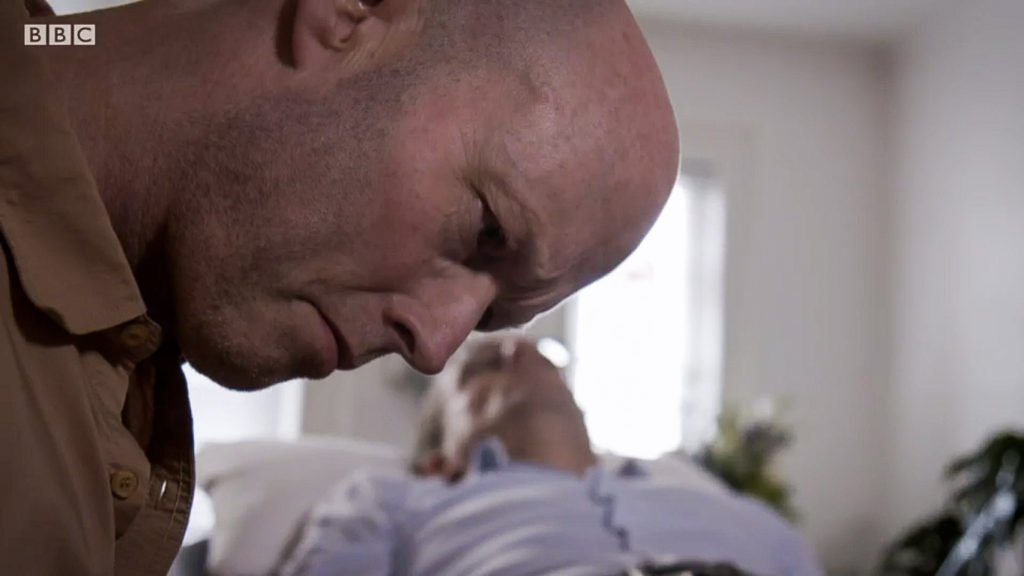On Thursday 1st September the first episode of series five of Trust Me I’m A Doctor aired on BBC2. I was keen to see how acupuncture was treated after spending a day engaged in trying to demonstrate a change in pressure pain threshold in the lead presenter about a month previously. The experiment went relatively well, and Michael’s pressure pain thresholds doubled from before to after the experiment. Sham acupuncture involved the use of ‘non-penetrating’ retractable needles. It was the first time I had used these in earnest and they succeeded in masking the subject – Michael could not tell which of the interventions involved real acupuncture. I did note that the sham needles could inadvertently penetrate the skin, particularly if the retractable shaft had an overly stiff sliding action. Michael found the sham needling created quite a strong sensation, and I had to work quite hard to create as strong a sensation with the real acupuncture – I found this very interesting as someone who has used acupuncture therapeutically for over 20 years, but never actually tried to perform sham acupuncture in a ‘trial’. Experienced acupuncture practitioners who then have to perform sham interventions have often remarked to me that the sham techniques do far more than they expect in terms of sensation, and in the case of the ‘so called’ non-penetrating needles, how often they cause bleeding.
So that brings us to the ‘acupuncture expert’, who, according to ‘Trust Me’, “…has spent much of his career studying the effect of acupuncture.” If you go to PubMed and insert in the search box: Hróbjartsson A [au] AND acup*; you will only get 4 papers, and only one of them will have acupuncture in the title. That is the infamous BMJ systematic review (Madsen et al BMJ 2009)[1] that got away with pooling data from trials of acute and chronic pain, from surgical pain to headache to arthritis. Yes I did say pooling. The clinical heterogeneity in this review was simply breathtaking, but I guess that the relevant BMJ editors were eclipsed by the home address of the authors – the esteemed Nordic Cochrane Centre. But this was not a review performed within the remit of the Cochrane Collaboration. As a Cochrane author I know the rigors of the process very well, and I can assure readers that Madsen et al would never pass muster in such an arena. Yet the authors of the review used this address, perhaps to their advantage in securing a prominent publication.
So we have an expert with one highly controversial review paper on acupuncture to his name. An expert who has never received acupuncture treatment let alone used it. An expert who thinks we do not know how it works, despite over 60 years of laboratory data investigating mechanisms from endogenous opioids to adenosine release.[2] Dare I say, a medical expert who has never touched a patient therapeutically?
So yes, I have to admit I am disappointed with the superficial way the subject was covered, and the lack of acknowledgement of the challenges of performing blinded trials of acupuncture. Challenges that are eminently illustrated by Haake et al (2007)[3] – the biggest ever sham controlled trial of acupuncture in low back pain, with over 1000 patients. In this trial, sham acupuncture performed twice as well as rather intensive German guideline-based conventional care. Can our acupuncture expert really propose that this is simply a placebo response?
References
1. Madsen MV, Gøtzsche PC, Hróbjartsson A. Acupuncture treatment for pain: systematic review of randomised clinical trials with acupuncture, placebo acupuncture, and no acupuncture groups. BMJ 2009;338:a3115. doi:10.1136/bmj.a3115
2. Filshie J, White A, Cummings M. Medical Acupuncture – A Western Scientific Approach. 2nd ed. Elsevier 2016.
3. Haake M, Müller H-H, Schade-Brittinger C, et al. German Acupuncture Trials (GERAC) for chronic low back pain: randomized, multicenter, blinded, parallel-group trial with 3 groups. Arch Intern Med 2007;167:1892–8. doi:10.1001/archinte.167.17.1892
Declaration of interests
I am the salaried medical director of the British Medical Acupuncture Society (BMAS), a membership organisation and charity established to stimulate and promote the use and scientific understanding of acupuncture as part of the practice of medicine for the public benefit.
I am an associate editor for Acupuncture in Medicine.
I have a very modest private income from lecturing outside the UK, royalties from textbooks and a partnership teaching veterinary surgeons in Western veterinary acupuncture. I have no private income from clinical practice in acupuncture. My income is not directly affected by whether or not I recommend the intervention to patients or colleagues, or by whether or not it is recommended in national guidelines.
I have not chaired any NICE guideline development group with undeclared private income directly associated with the interventions under discussion. I have participated in a NICE GDG as an expert advisor discussing acupuncture.
I have used Western medical acupuncture in clinical practice following a chance observation as a medical officer in the Royal Air Force in 1989. My opinions are formed by data that spans the range of quality and reliability, much of which is in the public domain.
I have a logical mistrust of the motives of anyone who advertises an interest or hobby in being a ‘Skeptic’, as opposed to using appropriate scepticism within their primary profession, or indeed organisations that claim to promote generic ‘science’ as opposed to actually engaging in it.
